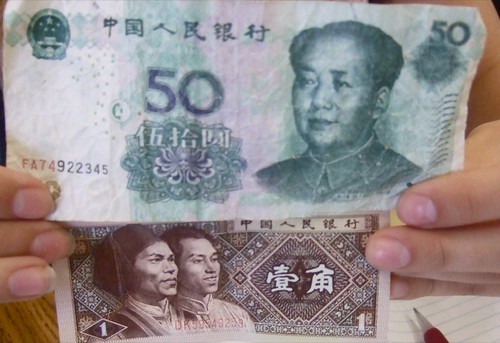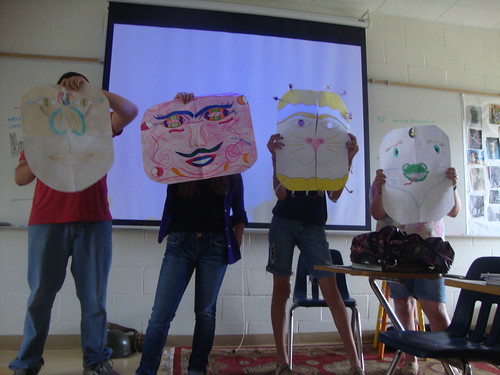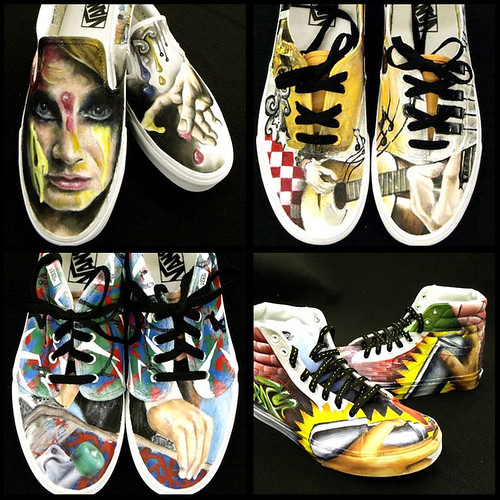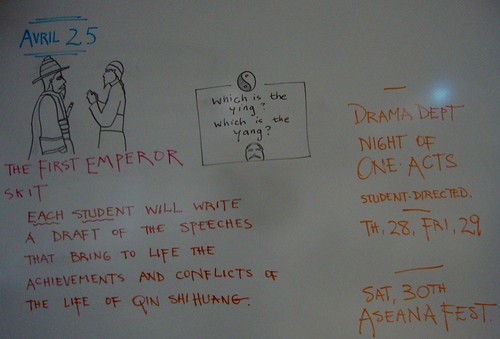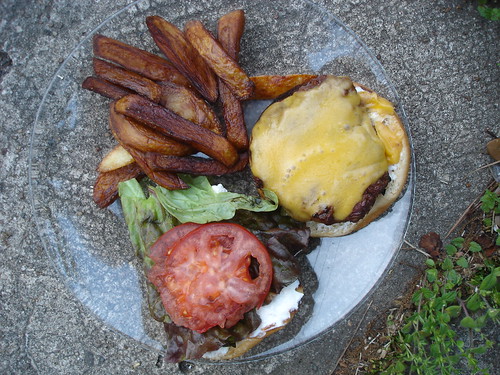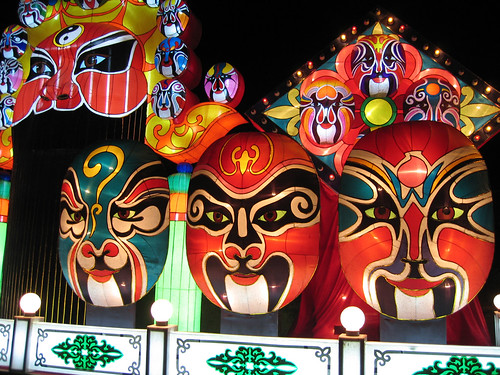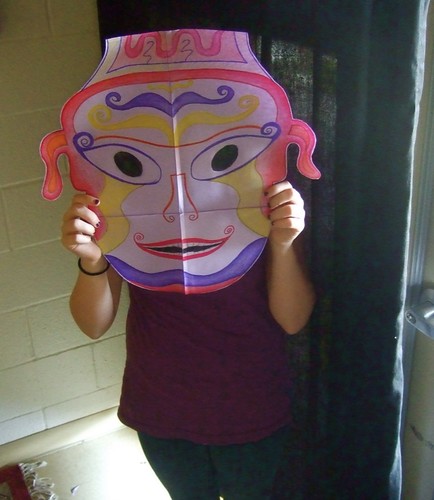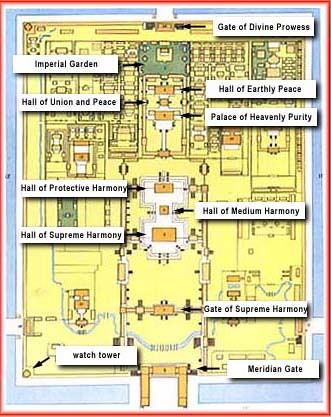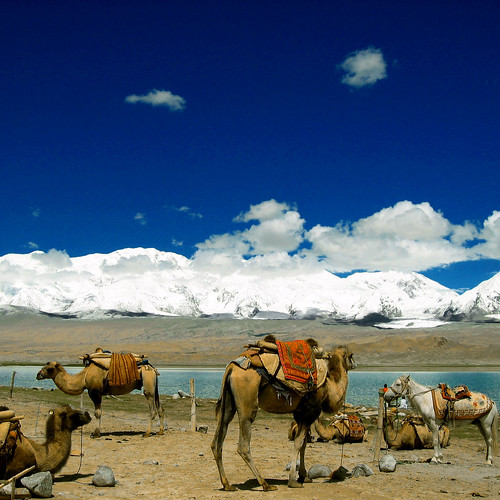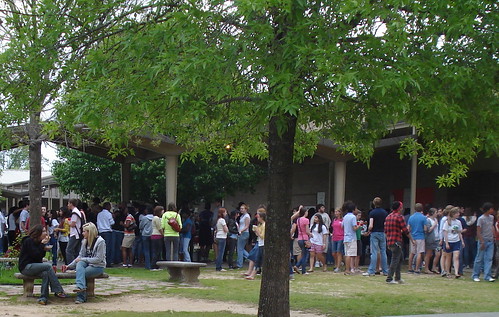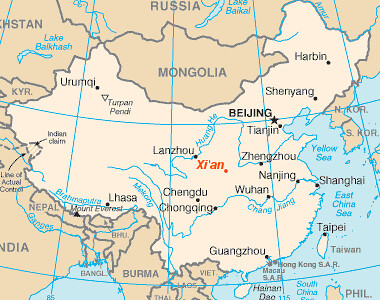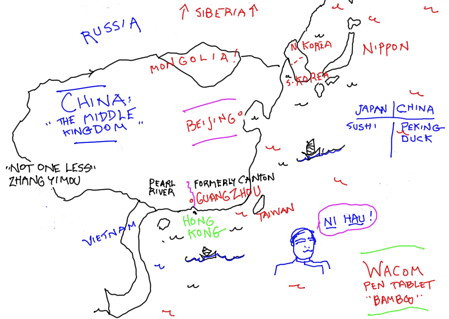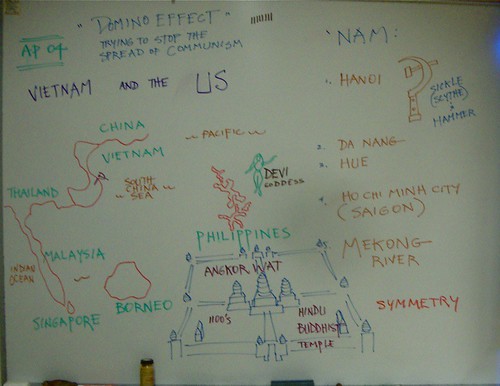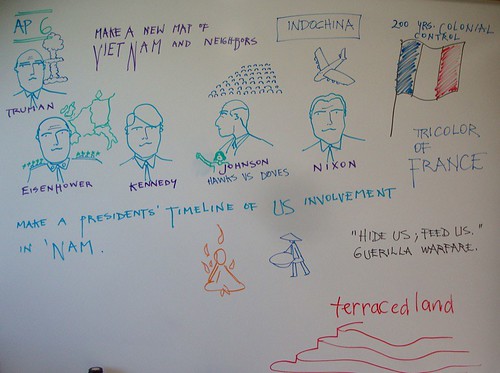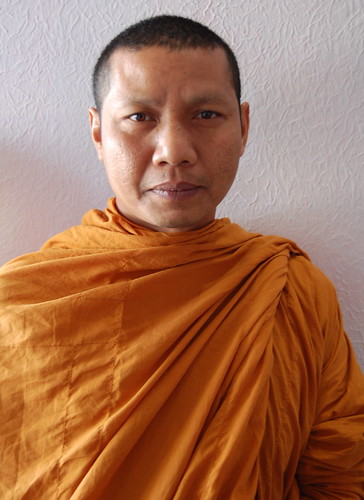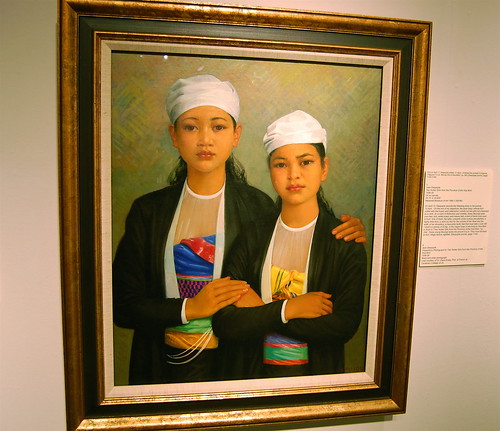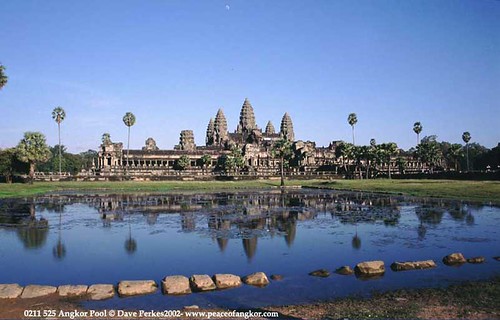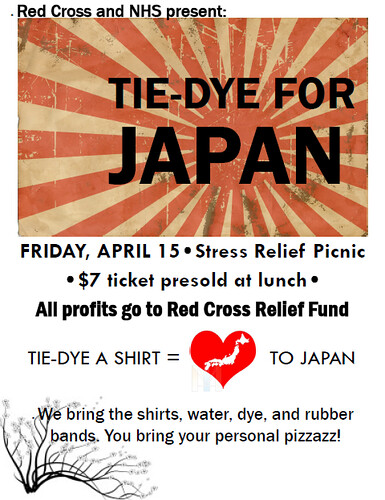The Odyssey of a Chinese teen: Not One Less
1. The film addresses the ______ gap between urban and rural populations. a) cultural b) economic c) legislative d) language.
2. Given the following bureaucrats: the Mayor, the brick factory manager, the clerk at the TV station, the TV station manager and the restaurant manager, we should conclude that the movie's director sees bureaucrats as mostly negative forces. T / F
3. The film primarily addresses this issue: a) history of China b) poverty in China c) rural education d) difficulty of life in the cities.
4. Which one of these characters is not battling the drop-out problem? a) Teacher Gao b) the Mayor c) Teacher Wei d) Zhang Huike.
5. Which one of these characters seems to provide a sense of balance and moderation? a) Teacher Gao b) the Mayor c) Teacher Wei d) Zhang Huike.
6. Which one of these characters is the most frugal? a) Teacher Gao b) the Mayor c) Teacher Wei d) Zhang Huike.
7. Which one of these characters shows heroic obstinacy? a) Teacher Gao b) the Mayor c) Teacher Wei d) Zhang Huike.
8. Shuixian School is located near the city of a) Hong Kong b) Xi’an c) Beijing d) Shanghai.
9. Is the mass media portrayed as a benign or a destructive force in China? The movie seems to say the news media is a) positive b) negative c) not a major factor.
10. A symbol of pride in learning and in the efficient use of resources in the school is: a) sending swift runner of the class to the sports specialty school b) flag c) chalk d) singing the anthem in an orderly formation.
11. "Keeping kids in school is harder than teaching them." Quote from a) the Mayor b) Substitute Wei c) Teacher Gao d) Zhang Huike.
12. Concerns about _____ dominate most of the characters and much of the film. a) ethics b) honor c) culture d) money.
Thursday, April 28, 2011
The Odyssey of a Chinese teen: Not One Less
Qin quiz number two
1. The life of Shi Huang Di: a) 1200 BCE b) 200 AD c) 200 BCE . 200 BCE
2. Shi Huang Di’s version of the Great Wall was called a “precursor” to the later Great Wall. Precursor means a) earlier version b) smaller example c) moveable pointer. precedes
3. A tomb may also be called a : a) monument b) mound c) subterranean
d) mausoleum. mausoleum
4. As a ruthless autocrat the First Emperor banned writing by __. a) Lao Tzu b) Tao c) Buddha d) Confucius. Master Kung Fu Tzu, or Confucius
5. The importance of his reign is intact after 2 millennium. That would be some a) 2 hundred b) 2 thousand c) 2 million years. thousand
6. As a young king, Huangdi began construction on a) roads b) canals c) obelisks d) his mausoleum. his tomb
7. When a youth becomes king he usually has a powerful member of the court who acts as his guide to decision-making. That person’s title? a) proxy b) consort c) regent d) caretaker. the term is regent
8. Shi Huang Di’s period of rule was preceded by a period of civil war known as a) Troubles b) Confucian c) Primitive d) Warring states. the Warring States
9. Shi Huang Di unified China economically by standardizing the Chinese units of measurements such as weights and measures, the currency, the length of the axles of carts (so every cart could run smoothly in the ruts of the new roads). He also standardized the writing. T / F indeed!
10. Shi Huang Di seriously sought the elixir of life, a magical potion which reputedly would enable immortality.
What is an elixir? a) a pool of magical water b) magical cape c) health-giving drink d) hallucinogenic drug. health-imparting drink
11. The huge terra cotta army buried with Shi Huang Di lies near which city? a) Beijing b) Shanghai c) Hong Kong d) Xi’an. Xi'an
12. In one of his greatest construction projects, the Emperor Qin commanded the building of the Ling Qu __ .
a) bridge b) tunnel c) canal d) pagoda. canal; it is still considered a masterpiece of engineering
18. Epang Gong refers to a a) concubine b) palace c) river d) ruler in the city of Xi'an. palace
19. Many of the people in the Chinese court were referred to as eunuchs. This means that they were a) congenital b) silly c) asthmatic d) castrated. castrati
20. Qin's main tomb has been exhumed but was closed to await more advanced archaeological technology. T / F true
1. b 2. b 3. d 4. c 5. b 6.d 7. c 8. a 9. F 10. c 11. a 12. c
13. a 14. T 15. F 16. c 17. b 18. b 19.d 20. F
Wednesday, April 27, 2011
Qin quiz / Magnet geography
1. Qin, the First Emperor, lived about __ __ . a) 200 BCE b) 200 CE c) 500 BCE d) 500 CE.
2. The First Emperor's capital was __ . a) Beijing b) Xi'an c) Shanghai d) Hong Kong.
3. Qin created a canal in the south of China that connected the Yangtze to the __ River. a) Chang b) Huang c) Yellow d) Pearl.
4. City on the southern edge of China: a) Beijing b) Xi'an c) Shanghai d) Hong Kong.
5. Contemporary capital of China: a) Beijing b) Xi'an c) Shanghai d) Hong Kong.
6. Most populous city of China: a) Beijing b) Xi'an c) Shanghai d) Hong Kong.
7. As emperor, Qin Shi Huang reorganized the bureaucracy, banishing appointed officials and replacing them with the nobility. T / F
8. The Great Wall of China accomplished 2 needs: it protected the southern borders and connected the Yellow and Yangtze rivers. T / F
9. As he entered middle age, the First Emperor grew afraid of death and obsessed with finding the ___ of life, which would allow him to live forever.
a) juice b) quicksilver c) mercury d) elixir.
10. Confucius and his closest advisers attempted an assassination of the First Emperor after Qin burned the teachings of Confucius. T / F
11. Qin was noted for his search for a) immorality b) immortality c) morality d) mortality.
12. The First Emperor simplified the Chinese script and commanded all his subjects to become Buddhist. T / F
Caddo Magnet in Vans competition: please vote at vans.com/customculture
Fifty thousand dollars in art department prize money is up for grabs, says Vans shoes. In the next week (deadline May 2) the qualifying high schools with the best organizations will win the Vans shoe customization contest.
And Caddo Magnet is in the semi-finals category, says teacher Shirlene Alexander.
At the site Vans.com/customculture one sees that Caddo Magnet is the only semi-finalist from Louisiana. Magnet faces 9 school / community organizations in the southeast division.
The voting process is quick, says student Rachel Carson.
Evidently only one vote from each IP is counted.
With students all over the world painting their shoes today, the first level of competition was stiff, noted James Young.
Having made the design and execution cut, the Magnet team hopes that the community will support them in the voting.
Voting closes at 11:59 pm on Mon, May 2, said Ashley Anderson.
Westminster Abbey, neighbor to the Houses of Parliament and the River Thames
Westminster Abbey is steeped in more than a thousand years of history, says westminster-abbey.org.
Benedictine monks first came to this site in the middle of the tenth century, establishing a tradition of daily worship which continues to this day.
The Abbey has been the coronation church since 1066 and is the final resting place of seventeen monarchs.
The present church, begun by Henry III in 1245, is one of the most important Gothic buildings in the country, with the medieval shrine of an Anglo-Saxon saint still at its heart.
Paintings, stained glass, pavements, textiles and other artifacts are to be seen; Westminster Abbey is also the place where some of the most significant people in the nation's history are buried or commemorated. The tombs and memorials comprise the most significant single collection of monumental sculpture anywhere in the United Kingdom.
Westminster Abbey, London / map
Westminster Abbey, is a large, mainly Gothic church, in Westminster, London, England (UK), located just to the west of the Palace of Westminster, says Wikipedia.
It is the traditional place of coronation and burial site for English monarchs of the Commonwealth Realms.
Monday, April 25, 2011
The skit of the First Emperor of China
An afternoon with the First Emperor of China
Wang, the chief eunuch of the palace:
All rise, in the year 200 BC, for the entrance of the First Emperor in his capital of Xi'an!
Huang Chi: He has succeeded in defeating all 6 of his antagonistic
neighbors. First he defeated the Wu, then the Pu, next the Lu, then
he also took care of the Xiu. . . .
Li Po: Yes, those were bloody but glorious victories, but I understand that there were also
two assassination attempts.
Ming Wei: Yes, in one assassination the felon, who was a friend of the
emperor's family, concealed a golden short sword under his coat. In
his attempt to impale the emperor, the assassin missed and plunged his
blade into a woman who was to be the assassin's future wife. Needless
to say, that wedding was called off. In fact, the girl managed to
mortally stab her betrothed groom with a silver dagger before she lost
consciousness.
Cheng Ha: Enough of these trivial adventures. War is an expensive
proposition. Is he going to bankrupt the empire as Louis XIV will do
later in history?
Wang: Perhaps. Yet it seems he has stimulated the economy effectively by
standardizing the script of the written language of Chinese. He has
also moved to standardize the wagons and roads, allowing businesses on
the road to the capital to generate a lot of wealth. He has even
standardized the length of a Roman Candle fire stick and the distance to be
reached by a flaming Bottle Rocket.
Li: I want to hear more about the assassinations. Tell me more, my good fellow.
Ming: In the second attempt upon the emperor's life his 18th concubine
brought the emperor his new-born 78th daughter for the Imperial
blessing. When he leaned over the examine the child, whose name was
Wie-wie, his concubine grasped a nearby lamp and swung it with
terrifying swiftness at the divine head. But the chief palace eunuch
stepped between them and accidentally took the powerful blow. The girl suffered, believe me.
She was thrown off the highest wall of the castle to her death on the
rocks below.
Li: That reminds me: what of the enormous wall the emperor is having built on the northern frontier? Aren't numerous workmen dying there because of the difficulty of construction?
Ming: Shh. Do not mention this rumor again. The bodies of the many dead coolies are simply thrown into the rubble between the exterior walls. The emperor believes that no one knows of these deaths.
Wang: Hear ye! Today the First Emperor will hear the case of the writings of Confucius and of the Confucian scholars and their books.
Huang: Confucius writes that all Chinese must be respectful and loyal to their families, their communities and their king. Is there anything wrong in that teaching?
Wang: No. Citizens must live that way. But Confucian writing also commands the emperor to respect the rights of commoners. This our Emperor cannot agree with.
Li Po: Wikipedia says that Confucius, "Supported the idea of government by an all-powerful sage, ruling as an Emperor, but his ideas contained a number of elements to limit the power of rulers. He argued that using language with truth, and honesty was of paramount importance. Even in facial expression, truth must always be represented."
Wang: Our divine emperor must never be questioned thusly. There is a solution, if I may humbly offer this idea. The emperor, in fact, likes this idea very much.
Wang continues: We will ask the people to gather and bring to the town squares all the books by Confucius. They will be told that the army will pay people an honorarium for each Confucian book to be placed in the square. Once the books have been displayed the army will douse the books with a flammable liquid and the books will be burned. The authors of books about Confucian teaching will be burned at the stake.
Fear will consume the minds of the people. Fear will guide their obedience to the First of All Rulers.
Qin Shi Huang: Pardon me, gentlemen, for interrupting your extensive palace chat of this afternoon. Your discussions have been held privately. And I noticed that you did not invite me to your dialogue. Thus your loving emperor can imagine only that you have been discussing, what? An appropriate gift for your master? Well, perhaps not. Judging from the fear I see in your eyes I believe that a conspiracy was being born this afternoon.
And if there is anything that disturbs me, it is the idea that my men are suspect. I cannot abide this worry and doubt. Are you good men and true?
Li and Ming: Indeed, sire! We honor you totally. Please accept our humblest apologies for making you upset.
Qin: Worry not. I see that you may be, indeed, innocent of my worst fears. Yet I must keep my subjects aware of my power. The palace guard and all my generals must fear me with fullest abandon. Therefore I must put you to death this afternoon. My guards! Quickly! These men must be executed before the hour is done. They were my trusted advisors. Yet our paths have diverged. Behead them both. Place their heads upon pikes so that they will be displayed at the Northern gates to Xi'an. The First Emperor has spoken.
Asian festival a tribute to Filipino culture on sat, Ap 30, Aseana Gardens, downtown Shreveport
Bonus points when you write briefly about what you saw and tasted at the Asian Fest on Sat, Ap 30.
The theme of the celebration this year is the Philippines. Expect costumes, parade and delicious foods from the Filipino people of Shreveport.
Beginning at 9 a.m.,says the Festival, exhibit tents and displays will be open, arts and crafts will be for sale, and Filipino cuisine (including a lechon, or roasted pig) will be available.
At 1 p.m., the program of cultural events and activities will begin. Filipino folk dances will be performed and traditional fiesta games will be presented. Filipino Folk dance performances will include the Itik-Itik, Bangga, Karinyosa, Pandango sa Ilaw, and Tinikling. Philippine fiesta games like pabitin and basaging ang palayok will be presented.
The grand finale of the program will be the performance of the traditional Santa Cruzan parade. The “Santa Cruzan,” roughly translated “Holy Cross,” is the largest festival in the Philippines. It is also called the “Flores De Mayo” (Flowers of May), as the parade is a procession of beautiful maidens in fine gowns walking with escorts underneath a canopy of individual arches covered with flowers and elaborate designs.
Dishes prepared for geography class: a special experience
Geography class can be enriched by presenting a special dish associated with a particular nation.
But serving common food typical of the American experience of a nation is not worth our time. I.e., spaghetti when studying Italy or, when studying China, egg rolls or fried rice: not appropriate.
Nor do I see merit in purchasing a dish from a store or restaurant. No points for such an anonymous contribution.
Dishes to be considered for points in geography class -
- a dish that stretches student taste buds a bit.
- a dish that is made at home.
- that can be served cold.
- that offers minimum hassle in serving and eating.
A good example is a quiche from France or baklava to represent Greece or Turkey.
From Chinese cuisine I think Sesame Noodles are a good choice. You make the spicy sauce using peanut butter, spices and peppers. There are many recipes online.
Be sure and try the Sesame Cold Noodles from your favorite Chinese-American restaurant.
Each student must check the dish with me for my approval via an email to trudeau11@gmail.com.
There is no set day for class meals. Students may bring a dish on whatever day is convenient for teacher and family.
Up to 10 pts credit.
Wednesday, April 20, 2011
Complete the sketch and coloring of your Chinese mask
Next class: 5 pts for a well-sketched and entirely-colored mask.
Include a yinyang, ancient Chinese symbol of earth & sky, of male & female, of heat & cold, of all the opposite forces that combine to make a whole universe.
Sunday, April 17, 2011
A life of conflict and achievement: the First Emperor, Qin Shihuangdi
Brief bio of Qin Shihuangdias adapted from asianhistory/about.com
“
Qin Shi Huang (or Shi Huangdi) was the First Emperor of a unified China, who ruled from 246 B.C. to 210 B.C.
In his 35-year reign, he managed to create magnificent and enormous construction projects. He also caused both incredible cultural and intellectual growth, and much destruction within China.
Whether he should be remembered more for his creations or his tyranny is a matter of dispute, but everyone agrees that Qin Shi Huang, the first emperor of the Qin Dynasty, was one of the most important rulers in Chinese history.
Early Reign of Qin Shi Huang:
The young king was only 13 years old when he took the throne, so his prime minister (and probable real father) Lu Buwei acted as regent for the first eight years.
This was a difficult time for any ruler in China, with seven warring states vying for control of the land. The leaders of the Qi, Yan, Zhao, Han, Wei, Chu and Qin states were former dukes under the Zhou Dynasty, but had each proclaimed themselves king as the Zhou fell apart.
In this unstable environment, warfare flourished, as did books like Sun Tzu's Art of War.
Lao Ai's Revolt:
According to the Shiji, or "Records of the Grand Historian," Lu Buwei hatched a new scheme to depose Qin Shi Huang in 240 B.C.
He introduced Queen Zhao Ji, mother of the Emperor, to Lao Ai, a man famed for his virility. The queen dowager and Lao Ai had two sons, and in 238 B.C., Lao and Lu Buwei decided to launch a coup.
Lao raised an army, aided by the king of nearby Wei, and tried to seize control while Qin Shi Huang was traveling outside of the area. The young king cracked down hard on the rebellion; Lao was executed in a grisly fashion, along with his family. The queen dowager was spared, but spent the rest of her days under house arrest.
Consolidation of Power:
Lu Buwei was banished after the Lao Ai incident, but did not lose all of his influence in Qin. However, he lived in constant fear of execution by the mercurial young king.
In 235 B.C., Lu committed suicide by drinking poison. With his death, the 24-year-old king assumed full command over the kingdom of Qin.
Qin Shi Huang grew increasingly paranoid (not without reason), and banished all foreign scholars from his court as spies.
The king's fears were well-founded; in 227, the Yan state sent two assassins to his court, but he fought them off with his sword. A musician also tried to kill him with a lead-weighted lute.
Battles with Neighboring States:
The assassination attempts arose in part because of desperation in neighboring kingdoms. The Qin king had the most powerful army, and neighboring rulers trembled at the thought of a Qin invasion.
China Unified:
With the defeat of the independent states, Qin Shi Huang had unified northern China. His army would continue to expand the Qin Empire's southern boundaries throughout his lifetime, driving as far south as what is now Vietnam.
The king of Qin became the Emperor of Qin China.
As emperor, Qin Shi Huang reorganized the bureaucracy, abolishing the existing nobility and replacing them with his appointed officials. He also built a network of roads, with the capital of Xianyang at the hub.
In addition, the emperor simplified the written Chinese script, standardized weights and measures, and minted new copper coins.
The Great Wall and Ling Canal:
Despite its military might, the newly unified Qin Empire faced a recurring threat from the north: raids by the nomadic Xiongnu (the ancestors of Attila's Huns).
In order to fend off the Xiongnu, Qin Shi Huang ordered the construction of an enormous defensive wall. The work was carried out by hundreds of thousands of slaves and criminals between 220 and 206 B.C.; untold thousands of them died at the task.
This northern fortification formed the first section of what would become the Great Wall of China.
In 214, the Emperor also ordered construction of a canal, the Lingqu, which linked the Yangtze and Pearl River systems.
The Confucian Purge:
The Warring States Period was dangerous, but the lack of central authority allowed intellectuals to flourish. Confucianism and a number of other philosophies blossomed prior to China's unification.
However, Qin Shi Huang viewed these schools of thought as threats to his authority, so he ordered all books not related to his reign burned in 213 B.C.
The Emperor also had approximately 460 scholars buried alive in 212 for daring to disagree with him, and 700 more stoned to death.
From then on, the only approved school of thought was legalism: follow the emperor's laws, or face the consequences.
Qin Shi Huang's Quest for Immortality
As he entered middle age, the First Emperor grew more and more afraid of death. He became obsessed with finding the elixir of life, which would allow him to live forever.
The court doctors and alchemists concocted a number of potions, many of them containing "quicksilver" (mercury), which probably had the ironic effect of hastening the emperor's death rather than preventing it.
Just in case the elixirs did not work, in 215 B.C. the Emperor also ordered the construction of a gargantuan tomb for himself. Plans for the tomb included flowing rivers of mercury, cross-bow booby traps to thwart would-be plunderers, and replicas of the Emperor's earthly palaces.
The Terracotta Army
To guard Qin Shi Huang in the afterworld, and perhaps allow him to conquer heaven as he had the earth, the emperor had a terracotta army of at least 8,000 clay soldiers placed in the tomb. The army also included terracotta horses, along with real chariots and weapons.
Each soldier was an individual, with unique facial features (although the bodies and limbs were mass-produced from molds).
The Death of Qin Shi Huang
A large meteor fell in Dongjun in 211 B.C. - an ominous sign for the Emperor. To make matters worse, someone etched the words "The First Emperor will die and his land will be divided" onto the stone.
Since nobody would confess to this crime, the Emperor had everyone in the vicinity executed. The meteor itself was burned and then pounded into powder.
Nevertheless, the Emperor died less than a year later, while touring eastern China in 210 B.C. The cause of death most likely was mercury poisoning, due to his immortality treatments.
Fall of the Qin Empire
Qin Shi Huang's Empire did not outlast him long. His second son and Prime Minister tricked the heir, Fusu, into committing suicide. The second son, Huhai, seized power.
However, widespread unrest (led by the remnants of the Warring States nobility) threw the empire into disarray. In 207 B.C., the Qin army was defeated by Chu-lead rebels at the Battle of Julu. This defeat signaled the end of the Qin Dynasty.
Chinese mask and skit on the life of Qin Shihuangdi
- Chinese mask project: entirely colored traditional design on 4-sheet area.
- Inquiry: color and large scale work provides distinction.
- 5 pts, completion.
Skit project -
a) Read handout biography of China's first emperor, Qin Shi Huangdi
(based on entry in Wikipedia).
b) 5-student teams pen a brief biographical script that features
1. exposition 2. conflict 3. climax 4. resolution / denouement.
c) Each student must have 4 brief speeches of 3 sentences each.
Interjections may be added as needed. Speeches are written on the back
of the mask.
- Evaluation, 12 pts - a. completion b. guidelines followed.
From Tibet to the East China Sea: the Middle Kingdom, or China / quiz
China Quiz 1
1. What nation borders China and is part of the East China Sea coast?
a) Taiwan b) Vietnam c) Hainan d) Hong Kong.
2. Is Tibet a region of China or a separate nation between China and
India? a) Independent nation b) region of China.
3. Which is the great Chinese river of the north? a) Yangtze b) Gobi
c) Yellow d) Pearl.
4. "Not One Less" is a small movie by a famous Chinese director. His
name? a) Zhang b) Wei c) Li d) Chan.
5. Translate "Ni hao, wo jiao Ming." a) Hello, you look like Ming."
b) "Hello, you are very fashionably dressed, Ming." c) "Hello, can
you tell me where to find the WC on Ming St?"
d) "Hello, I'm called Ming."
6. The equivalent of the ancient internet was called the __ __. It
connected East Asia, the Middle East and Europe with trade goods and
cultural information.
a) Gold Road b) Tapestry Road c) Silk Road d) China Road.
7. West of Beijing, this city is the ancient capital of China: __ .
a) Shanghai b) Lhasa c) Ulaan Baator d) Xi'an.
8. Generosity for the public good, as shown by the manager of the
brick works in Not One Less: __ . a) philosopher b) philanderer c)
philanthropist d) philatelist.
9. The kind of person who says, "I just follow the rules." __ . a)
tenacious b) frugal c) bureaucrat d) practical.
10. Most populous city of China: a) Shanghai b) Beijing c) Peking
d) Guangzhou.
11. "Give me the money first:" a) Zhang Huike b) Wei Minzhi c) The
Mayor d) Teacher Gao.
12. Trade in Slaves, perfumes, spices, medicines, jewels, glassware
went west from Xi'an to a terminus in Iran before continuing to
Europe. Iran is the modern name for
__ . a) Iraq b) Persia c) Asia Minor d) Arabia.
Thursday, April 14, 2011
Lhasa: capital of the Chinese region of Tibet
Tibet is the highest region on earth, with an average elevation of 4,900 metres (16,000 ft). It is sometimes referred to as the Roof of the World, says Wikipedia.
Today, most of cultural Tibet is ruled as "autonomous areas" by the People's Republic of China.
The economy of Tibet is dominated by subsistence agriculture, though tourism has become a growing industry in Tibet in recent decades.
The dominant religion in Tibet is Tibetan Buddhism, though there are Muslim and Christian minorities.
Tibetan Buddhism is a primary influence on the art, music, and festivals of the region.
Tibetan architecture reflects Chinese and Indian influences. Staple foods in Tibet are roasted barley, yak meat, and butter tea.
The ancient internet: Silk Road caravans connected East Asia with the Middle east and Europe
Slaves, perfumes, spices, medicines, jewels, glassware: the Silk Routes (collectively known as the "Silk Road") were important paths for cultural, commercial, and technological exchange between traders, merchants, pilgrims, missionaries, soldiers, nomads and urban dwellers from Ancient China, Ancient India, Ancient Tibet, Persian Empire and Mediterranean countries for almost 3,000 years.[5]
It gets its name from the lucrative Chinese silk trade, which began during the Han Dynasty (206 BC – 220 CE), says Wikipedia.
Extending 4,000 miles, the routes enabled people to transport slaves and luxuries such as silk, satin, hemp and other fine fabrics, musk, other perfumes, spices, medicines, jewels, glassware and even rhubarb, as well as serving as a conduit for the spread of knowledge, ideas, cultures, zoological specimens and some non indigenous disease conditions[6] between Ancient China, Ancient India (Indus valley, now Pakistan), Asia Minor and the Mediterranean.
Trade on the Silk Road was a significant factor in the development of the great civilizations of China, India, Egypt, Persia, Arabia, and Rome, and in several respects helped lay the foundations for the modern world. Although the term the Silk Road implies a continuous journey, very few who traveled the route traversed it from end to end.
For the most part, goods were transported by a series of agents on varying routes and were traded in the bustling markets of the oasis towns.[6]
Quiz on all notes Chinese next class
Mult-choice, open notes quiz.
sample questions -
1. What nation borders China and is part of the East China Sea coast?
2. Is Tibet a region of China or a separate nation between China and India? See below.
3. Which is the great Chinese river of the north?
4. "Not One Less" is a small movie by a famous Chinese director. His name?
5. Translate "Ni hao, wo jiao Ming."
6. The equivalent of the ancient internet was called the __ __. It connected East Asia, the Middle East and Europe with trade goods and cultural information.
The formerly independent nation of Tibet has been a region of China
for some 60 years.
Wikipedia: "Today, most of cultural Tibet is ruled as "autonomous
areas" by the People's Republic of China."
"Ni hao, wo jiao Robert!"
"Ni hao, wo jiao Robert" is Mandarin Chinese for "Hello, my name is Robert."
See youtube tutorials for pronunciation.
Wednesday, April 13, 2011
Clubs vend lunch & dessert during the Spring picnic on Fri, Ap 15, 11 - 1 pm
Bring extra cash to school on Fri, Ap 15.
Fund raising is serious business for Magnet's clubs during the Spring picnic, as students operate 20 booths selling a variety of popular foods.
Pizza, burgers, steak on a stick and hot dogs are some of the main items. Ice cream, cotton candy, brownie sundaes and Happy Bellies are among the sweets.
Tie dye shirts to be made on site - a benefit for Japanese relief - are on the agenda, too. Please pay $7 to Joy Shan this week so your t-shirt can be ordered in advance.
Magnet's picnics are safe and orderly because our students are cooperative and because the faculty works hard to guard against outsiders visiting the campus. We expect to continue our long record of secure fun on Fri.
"Give me the money:" a profile of China in the movie Not One Less
Wei Minzhi is the substitute teacher who learns to manage kids in the Zhang Yimou movie Not One Less.
Wei's relentless requests for payment form a theme for the movie. But it's actually Zhang Huike, the mischievous student, who says (to the mayor), "Give me the money first."
Other details -
- Teacher Gao: frugality.
- The mayor: practicality.
- Drop outs as a widespread social issue.
- Remote village: poverty and a simple life.
- One-room school: 1st through 4th graders (28), same room.
- Students board at the school when they live too far in the country.
- Yuan, currency (Japanese currency: yen)
- Lying, bribery a way of life.
- Generosity and respect also commonplace (ex: the restaurant owner who hires Zhang to wash dishes, knowing he is destitute).
- Tenacity: Wei is dogged and focused in her quest to find Zhang.
- Philanthropist: generosity as shown by the manager of the brick works.
- "The power is off," says someone at the brick works. Across the world, electricity is available intermittently. China has a huge challenge in supplying its huge population with electric power.
- Bureaucracy: as in the run-around Wei experienced at the entrance to the TV station. "I just follow the rules," said the small-minded bureaucrat.
- "Ni hao; wo jiao Leilei." "Hello; my name is Leilei." (Ni hau is also Ni hao.)
-
Tuesday, April 12, 2011
Xi'an: home of the first Emperor as well as movie director Zhang Yimou
Xi'an is the capital of the Shaanxi province in the People's Republic of China. One of the oldest cities in China, with more than 3,100 years of history, the city was known as Chang'an before the Ming Dynasty.[1]
Xi'an is one of the Four Great Ancient Capitals of China, says Wikipedia, having held that position under several of the most important dynasties in Chinese history,[3] including Zhou, Qin, Han, Sui, and Tang.[3]
Xi'an is the eastern terminus of the Silk Road and home to the Terracotta Army.[1]
The first emperor of China, Qin Shi Huang ordered the construction of the Terracotta Army and his mausoleum just to the east of Xi'an almost immediately after his ascension to the throne.
The Bell Tower of Xi'an, built in 1384 during the early Ming Dynasty, is a symbol of the city of Xi'an and one of the grandest of its kind in China.
Since the 1990s Xi'an has re-emerged as an important cultural, industrial and educational centre, with facilities for research and development, national security and China's space exploration program.
Monday, April 11, 2011
China: the Middle Kingdom
An overview -
Greatest cities of China
- Shanghai, 14.5 million
- Beijing (formerly known as Peking), 13 million
- Guangzhou ( formewrly known as Canton), 12 million
Shanghai is the huge port on the Pacific. It boasts numeroud tall, beautiful skyscrapers around the harbor. A growing middle class is creating a somewhat glamorous life in Shanghai.
Beijing is the political capital.
Guangzhou (Canton) is the center of a vast manufacturing district in the south.
- Cantonese Chinese - the second type of Chinese langauge.
- Cantonese cooking - often spicy dishes.
- The famous Pearl River connects Guangzhou with the Pacific.
Hong Kong, an island city near the mouth of the Pearl River.
- $$$$$: the business success of Hong Kong may be due to the fact that the island was under British control until 1990. The British fostered the free enterprise system and personal freedom. Today the control of Hong Kong has been returned to Beijing. It continues to prosper.
- Taiwan is an island off the SE coast and is a separate nation. Communist China is called the People's Republic of China (PROC). The nation of Taiwan is called the Republic of China (ROC).
Neighbors -
- Russia
- Mongolia
- India
- Vietnam
- N Korea
- Japan
- East China Sea
- South China Sea
- Yellow Sea
- Sea of Japan
Wednesday, April 06, 2011
Open notes Magnet quiz about Vietnam in the next class
Material:
- Mondotrudeau blog notes
- additional class notes
- map
- from the Indian Ocean to the Pacific
'Nam: from China to the South China Sea
1. Chronological order of the presidents: a) Eisenhower, Nixon, Kennedy b) Eisenhower, JFK, LBJ c) Kennedy, Nixon, Johnson d) Nixon, LBJ, Eisenhower.
Truman, Eisenhower, Kennedy, Johnson, Nixon, Ford
2. President associated with escalation of combat troops in Vietnam: a) LBJ b) Eisenhower c) JFK d) Truman. Johnson
3. For decades Ho Chi Minh City was called a) Saigon b) Ha Noi c) Bangkok d) Angkor Wat. it was the capital of South Vietnam: Saigon
4. Vietnam is a communist nation today. T / F Yes.
5. He established the communist Democratic Republic of Vietnam in 1945 and led the defeat of the French in 1954 at Dien Bien Phu. a) Truman b) Gandhi c) Eisenhower d) Ho Chi Minh. "Uncle Ho"
6. President who sent the first 35-man military advisory group to aid the French fighting to maintain colonial power in Vietnam. a) Eisenhower b) Truman c) JFK d) Nixon. Truman
7. President Eisenhower’s sense of the post-WWII dynamic in Asia: a) Geneva Accord b) Domino Theory c) “Win the hearts and minds of the people.” d) Gorilla in the living room.
8. European nation that was the colonial master of Vietnam and Indochina for some 200 years: a) France b) England c) USA d) China.
9. This river is like the Mississippi to the people of Vietnam and SE Asia: a) Chang b) Yangtze c) Tigris d) Mekong.
10. The Cambodian center called Angkor Wat has a background that includes a) Hindu & Muslim b) Muslim & Buddhist c) Sikh & Muslim d) Hindu & Buddhist.
11. Ho Chi Minh's capital for his communist forces: a) Hanoi b) Hue c) Da Nang d) Saigon.
12. Not an example of Vietnamese ingenuity: a) punji traps b) tunnel system c) rice paddies d) guerilla warfare.
Tuesday, April 05, 2011
Than Ti of the Buddhist Temple of Bossier
Guerilla warfare (French: guerre, "war, therefore, guerilla, "little war").
5 presidents -
Truman: inherited the presidency and the decision of whether to drop the A bomb to end WWII against the Japanese. Reasoned that it would ultimately save lives by bringing a quicker end to the war.
Eisenhower: 5-star general whose strategy helped defeat Hitler. As president, defined the Cold War as a mostly covert struggle against communism and communism's Domino Effect.
JFK: was able to out-poll the experienced leader Richard Nixon by virtue of his youthful good looks in the first televised presidential debate, 1960. Very slim margin of victory, reminding us of the Bush Vs. Gore election. JFK assassinated in 1963.
Lyndon Johnson: became president upon JFK's death. Used Gulf of Tonkin Resolution to make war against the North Viet communists.
Continually raised troop strength over several year period but could not produce a victory. His team thoroughly underestimated the enemy (sound familiar, as in Iraq?).
Using the draft to fill the ranks of the Army, LBJ incurred the wrath of the student protest movement. Demonstrations against the war - doves vs. hawks - grew from campus activity to large-scale marching in cities. Culminated with March on Washington (250,000 participants) in 1968.
Troop deployment in Vietnam peaks in '68 at some 500,000. The NVA & VC make a dramatic victory in '68 by a large-scale, surprise attack against our strongholds. Called the Tet Offensive, it marks a turning point in the war.
Richard Nixon: determined to best the communists, Nixon used heavy bombing of North Vietnam to gain an advantage. Somehow, Ho Chi Minh's forces held out. Overall, Nixon managed the US exit from 'Nam. he also won praise by opening trade with communist China, at the time a backwards nation and "sleeping giant."
Nixon resigned in '74 due to the Watergate Scandal.
He and his aides had denied involvement in various "dirty tricks" against the Democrats in the election of '68. Journalists kept the inquiry alive and after several years of determined reporting, found the evidence that Nixon had known about the chicanery of his re-election team. When the US public learned that the president had lied about his involvement, Nixon lost the nation's support. he resigned rather than face impeachment.
Geneva Accord
Gulf of Tonkin Resolution
Ho Chi Minh
Asian guerilla warfare
Anti-war protest movement
NVA & VC in Tet Offensive
Counterculture movement
My Lai village massacre
Vietnamese refugees: "boat people"
Mekong River
Armaments of the Vietnam conflict
Domino theory, Gorilla in the room: the Vietnam conflict
Domino theory - Pres Eisenhower's fear that if communists were successful in taking over one Southeast Asian nation, that more nations would follow suit.
Gorilla in the living room - China.
US leaders knew that to provoke China into entering a conflict would be to unleash a giant foe. Yet no one wanted to discuss the China factor in a frank manner.
Vietnam War Timeline from Infoplease.com
U.S., South Vietnam, and Allies versus
North Vietnam (NVA) and National Liberation Front (Viet Cong).
1950
President Truman sends 35-man military advisory group to aid French fighting to maintain colonial power in Vietnam.
1954
After defeat of French at Dien Bien Phu, Geneva Agreements (July) provide for withdrawal of French and Vietminh to either side of demarcation zone (DMZ). Presidents Eisenhower and Kennedy (from 1954 onward) send US civilian advisers and, later, military personnel to train South Vietnamese.
1960
Communists form National Liberation Front in the South. These are hidden, guerilla types.
1960–1963
U.S. military advisers in South Vietnam rise from 900 to 15,000.
1964
North Vietnamese torpedo boats reportedly attack U.S. destroyers in Gulf of Tonkin (Aug. 2). President Johnson orders retaliatory air strikes. Congress approves Gulf of Tonkin resolution (Aug. 7) authorizing president to take “all necessary measures” to win in Vietnam, allowing for the war's expansion.
1965
U.S. planes begin combat missions over South Vietnam. In June, 23,000 American advisers committed to combat. By end of year over 184,000 U.S. troops are in the region.
1966
B-52s bomb DMZ, reportedly used by North Vietnam for entry into South.
1968
U.S. has almost 525,000 men in Vietnam.
In the Tet offensive (Jan.–Feb.), Viet Cong guerrillas attack Saigon, Hue, and some provincial capitals.
In My Lai massacre, American soldiers kill 300 Vietnamese villagers (March 16).
President Johnson orders halt to U.S. bombardment of North Vietnam (Oct. 31). Saigon and N.L.F. join U.S. and North Vietnam in Paris peace talks.
1969
President Nixon announces Vietnam peace offer (May 14)—begins troop withdrawals (June). Viet Cong forms Provisional Revolutionary Government.
U.S. Senate calls for curb on commitments (June 25). Ho Chi Minh, 79, North Vietnam president, dies (Sept. 3).
Massive demonstrations in U.S. protest or support war policies.
1970
U.S. troops invade Cambodia in order to destroy North Vietnamese sanctuaries (May 1).
1971
Congress bars use of combat troops, but not air power, in Laos and Cambodia (Jan. 1). South Vietnamese troops, with U.S. air cover, fail in Laos thrust. Many American ground forces withdrawn from Vietnam combat.
New York Times publishes Pentagon papers, classified material on expansion of war (June).
1972
Nixon responds to North Vietnamese drive across DMZ by ordering mining of North Vietnam ports and heavy bombing of Hanoi-Haiphong area (April 1). Nixon orders “Christmas bombing” of North to get North Vietnamese back to conference table (Dec.).
1973
President orders halt to offensive operations in North Vietnam (Jan. 15). Representatives of North and South Vietnam, U.S., and N.L.F. sign peace pacts in Paris, ending longest war in U.S. history (Jan. 27). Last American troops departed in their entirety (March 29).
1975
Full-scale warfare resumes. South Vietnam premier Nguyen Van Thieu resigns (April 21). South Vietnamese government surrenders to North Vietnam; U.S. Marine embassy guards and U.S. civilians and dependents evacuated (April 30).
More than 140,000 Vietnamese refugees leave by air and sea ("boat people"), many to settle in the U.S.
Communist govt in control.
Monday, April 04, 2011
Angkor Wat, the grand Hindu-Buddhist temple of Cambodia
Angkor Wat was built for the king Suryavarman II in the early 12th century as his state temple and capital city, says Wikipedia.
It was first Hindu, dedicated to the god Vishnu, then Buddhist.
It is the world's largest religious building.[1]
It has become a symbol of Cambodia, appearing on its national flag, and it is the country's prime attraction for visitors.
The temple is admired for the grandeur and harmony of the architecture, its extensive bas-reliefs and for the numerous devatas (guardian spirits) adorning its walls.
